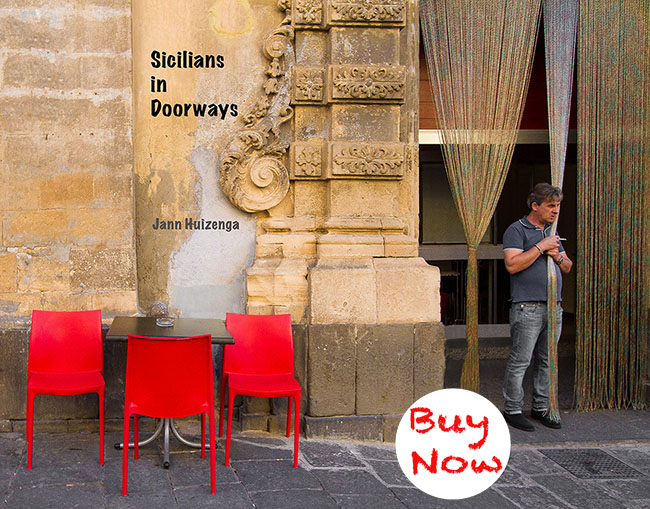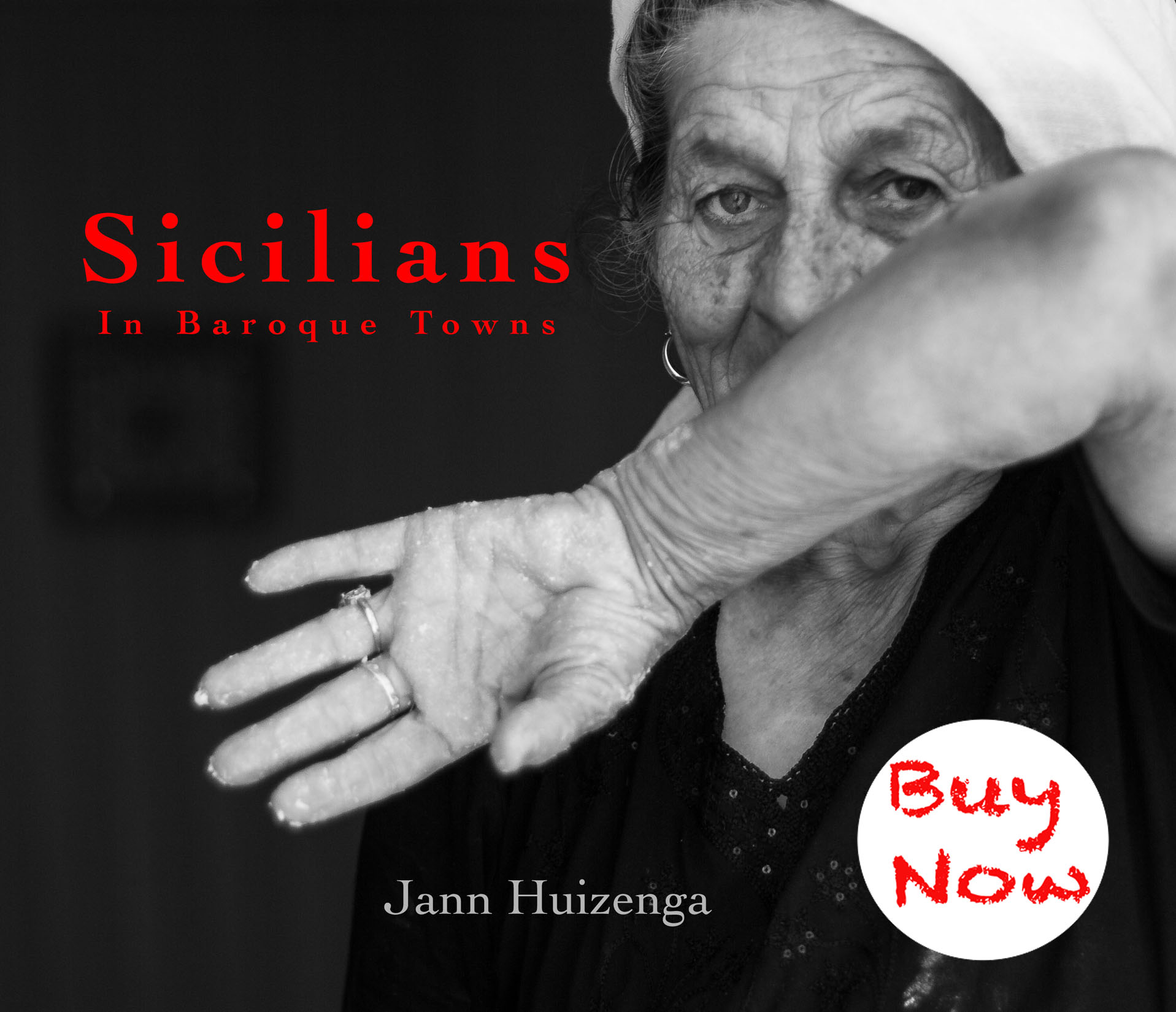November 18, 2010
People ask: Do you, uh, have a trust fund or something? How can you afford a house in Italy?
Answer: We’re just a couple of free-lance artist-teacher types, wondering from which tree the next job will drop. I acquired the house in Sicily on a shoestring budget by sheer force of will. (Prices in Sicily are, certo, a fraction of those in Tuscany.)
We practice frugality. We schmear paint on the walls ourselves with big sponges, sand plaster from raw stone, putty every crack and crevice.
Our coffee table is a weathered old skid scavenged from the street. We extracted the rusty nails and polished the brittle wood to a shine.
We eat from mismatched china scavenged from Sunday-morning flea markets.
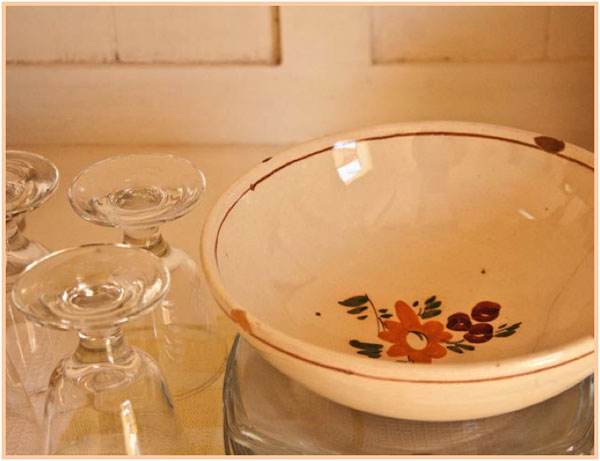 Old mixing bowl from the Modica flea market, €5 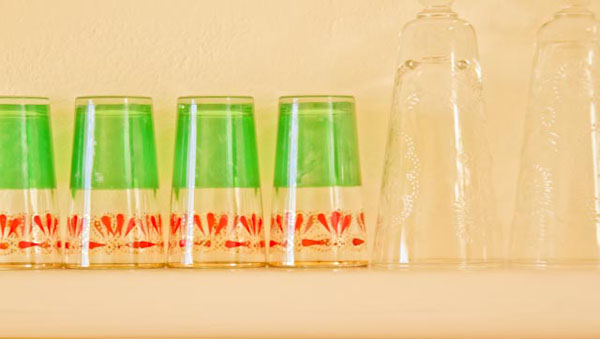 Glasses from the Modica flea market, €1 each We decorate with “trash” that Sicilians have tossed.
 Sicilian chandelier, circa 1950, from the Modica flea market, €10 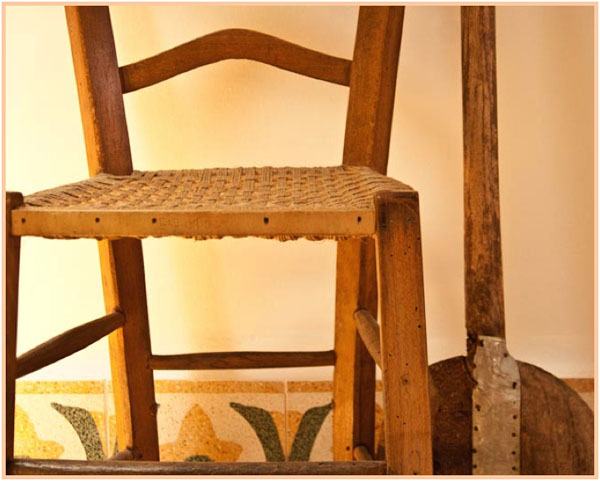 "Found" antique chair, gratis  Bath door made of found wood (and flea-market knobs, €2) 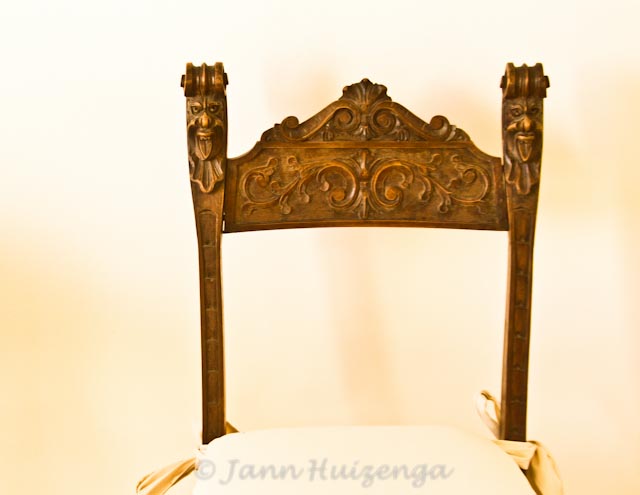 Flea-market chair, €30 We shop the sales at Upim.
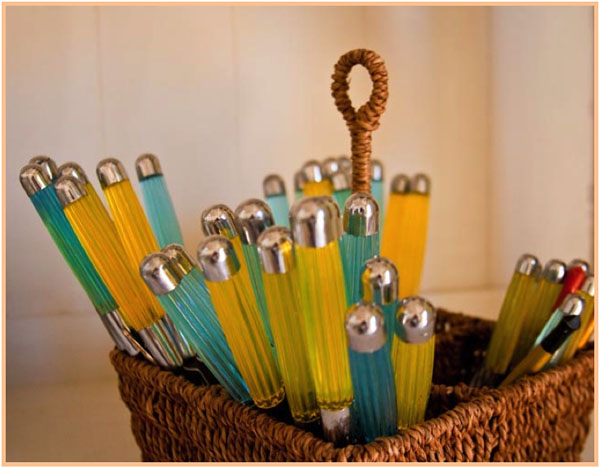 Flatware purchased on sale at Upim (Italian version of K-Mart), €1 each We frequent church bazaars, jam-packed with cheap new or vintage homemade goodies.
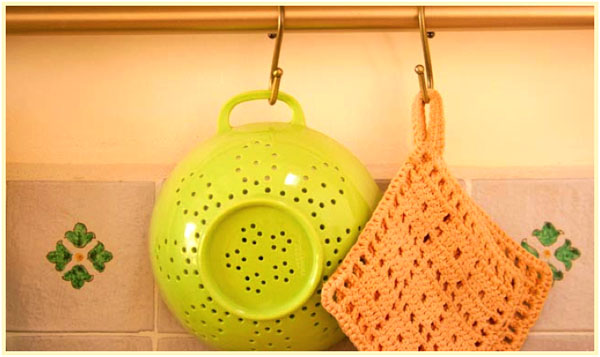 Potholders crocheted by a local woman and sold at a church bazaar, €2 And did you know that in Sicily you can bargain for new beds and couches (like for cars in the US)?
***
Click to comment.
Click to subscribe.
November 12, 2010
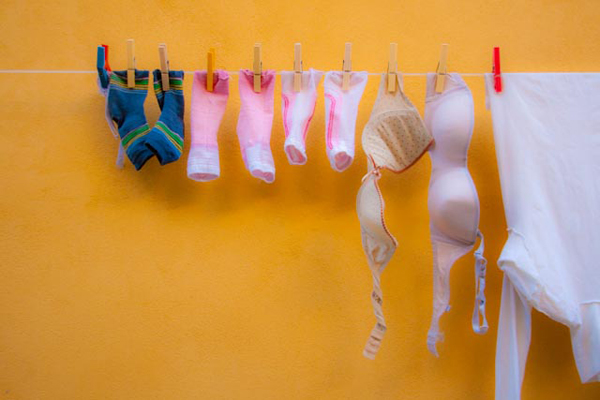
The bras on the line are symbolic.
Moving to a Sicilian village means exposing yourself to public scrutiny, undies and all. You’re watched, eyeballed.
One morning, a tall villager spots my husband Kim—who has just returned from the US—in the piazza. “So,” he says, winking, “the sheep is back in the pen, is he?”
How did he even know Kim was gone?
For two weeks, I leave the house early, before 7am, to work on a project with a friend. I finally get a day to sleep in, but the buzzer squeals violently, over and over. I throw on a robe and open the door. “Oh, sorry signora,” say my neighbors, “to disturb you so early, but we know you will leave the house soon and we need to talk to you.”
They’ve been tracking my movements?
I smell what neighbors are cooking for lunch. I hear them singing, bickering. Living life here is like reading a tell-all, and being shocked to see you’re one of the characters.
How will I fare, exchanging an anonymous life for an examined one?
Time will tell.
***
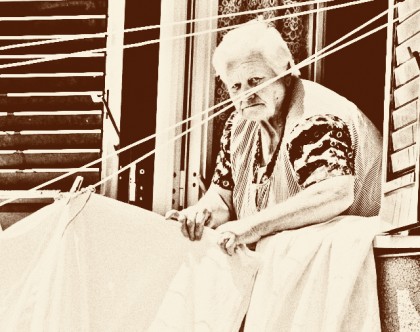 Click to comment. Click to comment.
Click to subscribe.
November 5, 2010
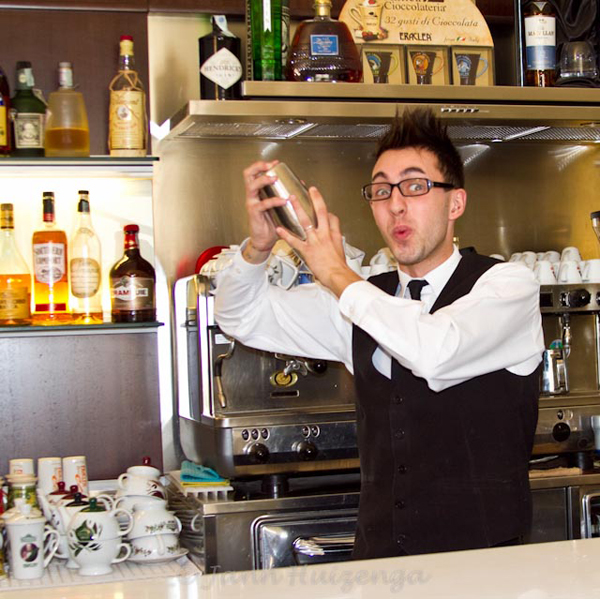
I savor the morning. A church blushes. A fountain plashes. A lonely piazza exhales the aroma of fresh-baked brioche.
Carmelo makes the world’s best coffee, a magic brew, strong enough—for 30 minutes at least—to make the world pink with possibility.
If you’re planning a trip to Southeast Sicily, why not start your day in Ragusa Ibla with Carmelo (at the Donnafugata Bar on Piazza Pola)?
What to do after the bar? See my suggestions for “A Golden Day in Ragusa Ibla” on Susan Van Allen’s site. She also shares some good tourist tips for Siracusa and Catania.
Happy touring! If you’ve been to these towns, please tell us what’s top on your list. Thanks for reading!
***
Click to comment.
Click to subscribe.
***
Susan Van Allen is the author of the wonderful 100 Places in Italy Every Woman Should Go.

November 2, 2010
(first published Nov 2, 2009)
A few years ago, I wanted to buy a ruin of a house on a solitary road out beyond the Ragusa cemetery. Sicilian friends (perfectly rational, well-educated ones) said I was matta, insane, that I’d be visited at night by dead souls.
“What do you mean?” I hollered. “I live two blocks from a cemetery in the US and I’ve never seen a ghost!”
They looked at me mournfully and insisted that the danger was real. They themselves would absolutely never pay me a visit there!
So I gave up the idea of that house with its faded pink walls, shocked at how alive the dead are in Sicily.
Sicilian cemeteries are always set well outside of town behind imposing walls. Below is the Scicli cemetery, full of mausoleums, magnificent pines and tall cypress.

Cemeteries here are well-tended, with custodians and on-site florists. They seem to be open most of the day, even during the long lunch break.


Many of the tombs show pictures of the dead.

Streets have names, just like in a real town.

Today is il Giorno dei Morti, Day of the Dead. Sicilian families flock to cemeteries—arms overflowing with lilies, mums, roses, and daisies—to spend time with their dearly departed.

October 30, 2010
“They pour themselves one over the other like so much melted butter over parsnips,” writes D.H. Lawrence about Sicilians in Sea and Sardinia. “So terribly physically all over one another.”

“And that is how they are.”
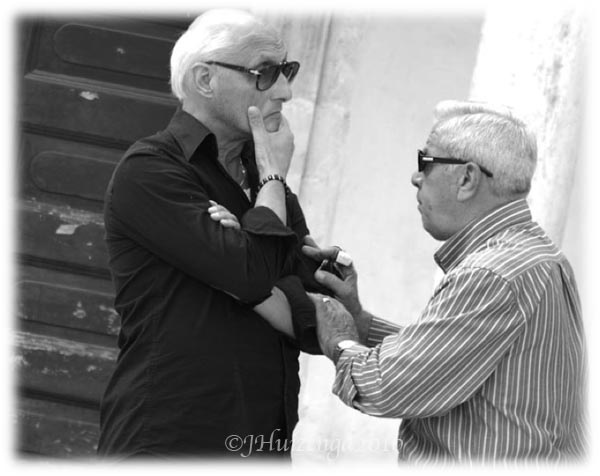
I love melted butter over parsnips. How about you?
***
 D.H. Lawrence lived in Sicily (Taormina) from 1920 to 1022. Here is a 1922 New York Times article about his life there. D.H. Lawrence lived in Sicily (Taormina) from 1920 to 1022. Here is a 1922 New York Times article about his life there.
***

Click to comment.
Click to subscribe.
|
Subscribe to Baroque Sicily
Copyright reserved -
All photos and text on BaroqueSicily are Copyright of Jann Huizenga ©2009-2015, unless otherwise noted. Material may not be copied or re-published without written permission. All rights reserved.
|




















 D.H. Lawrence lived in Sicily (Taormina) from 1920 to 1022. Here is a 1922
D.H. Lawrence lived in Sicily (Taormina) from 1920 to 1022. Here is a 1922 
